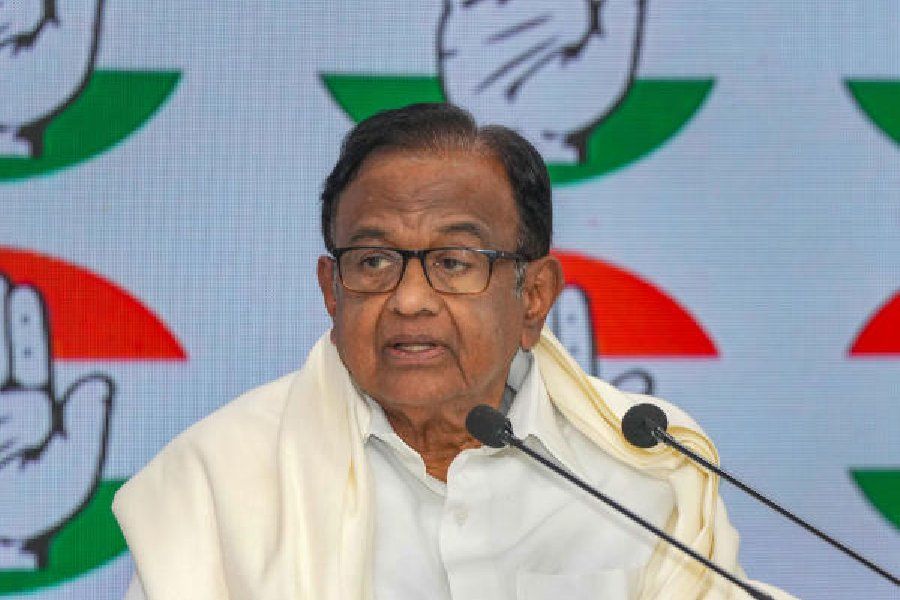Neighbourhood first to last to lost

- P. Chidambaram, M.P
In our neighbourhood, India shares a 3,488 km border with China but nobody thinks of China as our neighbour; I wonder why? Our two neighbours with long borders are Pakistan (3,310 km) and Bangladesh (4,096 km), and we have practically fenced the entire length. Nepal and India have an ‘open border’ policy and, save a few hiccups, the open border has facilitated the movement of goods, services and humans between the two countries. Bhutan is a small country that shares a 578 km border with India but is a valued and strategically located neighbour. Sri Lanka is separated by the narrow Palk Straits and, for historical and cultural reasons, is an important and sometimes problematic neighbour. Maldives is some distance away but we have tried to maintain good relations with that country despite China. In 1988, we saved Maldives from being taken over by a group of bandits but I doubt if anyone remembers Operation Cactus. Afghanistan has a small border with India of 106 km; its turbulent domestic politics has kept relationships with India on an ‘on-off’ mode. India and these countries, barring China, are members of a regional group called South Asian Association for Regional Cooperation (SAARC).
Whither SAARC?
What is the place of these neighbours in the Indian scheme of things? I K Gujral declared the Look East policy. A.B. Vajpayee astutely changed the policy to Act East. As is his wont, Mr. Narendra Modi grandiloquently announced his government’s policy as Neighbourhood First.
I was curious to know the Prime Minister’s personal interest in the countries of the neighbourhood. I asked when did Mr. Modi last visit each member-country of SAARC and I found the following from PMINDIA website:
Bhutan: 2024, March Nepal: 2022, May Bangladesh: 2021, March Maldives: 2019, June Sri Lanka: 2019, June Afghanistan: 2016, June Pakistan: 2015, December
I also found that in the last 10 years, the Prime Minister had visited Nepal five times, Bhutan thrice, Sri Lanka thrice, Bangladesh twice, Maldives twice, Afghanistan twice and Pakistan once. These 18 visits were among the 82 foreign visits in Mr Modi’s tenure. I was disappointed to note that, except for a one-day visit to Bhutan in March 2024, he had not visited any other neighbour for over two years.
The 18th SAARC Summit was held at Kathmandu, Nepal in November 2014. The 19th Summit, scheduled in November 2016 at Islamabad, Pakistan, was boycotted by India, followed by four other countries. No Summit has been held since. Jaswant Singh, foreign minister under Vajpayee, pronounced SAARC as a ‘complete failure’. The Modi government seems to have willingly accepted that conclusion as final.
Dragon and Elephant
During his tenure, Mr. Modi has visited China five times between 2015 and June 2018, after which relations soured. He has also visited Myanmar twice and Mauritius once. China infuriates Mr. Modi but, by all accounts, he is helpless. He has allowed China to dictate the policies of India. On talks of disengagement, China is setting the agenda, and after endless rounds of talks no outcome is visible. On military presence, China has augmented its troops on the LAC and is building roads, bridges, settlements, camps, underground facilities and storage sites. On trade, the deficit with China has grown from USD 37 billion in 2013-14 to USD 85 billion in 2023-24. Mauritius is happy to be a safe haven for those who wish to bring money into that country and invest in India. Myanmar drives Rohingya refugees to India and is, otherwise, unnoticed. What has India achieved in altering these outcomes? Visibly, nothing so far.
For ignoring our neighbourhood, we have paid a price. We did not anticipate the mid-term change of government in Nepal, and Mr K.P. Sharma Oli is back as Prime Minister. We had no clue that Sheikh Hasina will be literally driven out of Bangladesh. We indulged Mr. Ranil Wickremesinghe but had little contact with Mr. Anura Dissanayake who has been elected the President of Sri Lanka with a popular vote of 42.3 per cent. Upon being elected President of Maldives, Mr. Mohamed Muizzu’s first act was to evict the small number of Indian military advisers. As far as Pakistan is concerned, I suspect the Modi government’s policy is dictated by its domestic political calculations and is unconcerned about who are the real rulers of that country.
Self-Inflicted Injury
India’s declining influence in the South Asian region is a self-inflicted injury. Mr Modi’s foreign policy is striving to acquire a sheen by projecting India as a ‘peace broker’ in world affairs. Witness the burst of activity and meetings with the leaders of Russia, Ukraine, the U.S., France and others, and attendance at G20, UN summit and QUAD. While Mr. Modi has our best wishes, we may also remind him that his policy on the neighbourhood is being described as Neighbourhood Last or Neighbourhood Lost.
(The author is a former Union Minister)
Courtesy: The Indian Express







